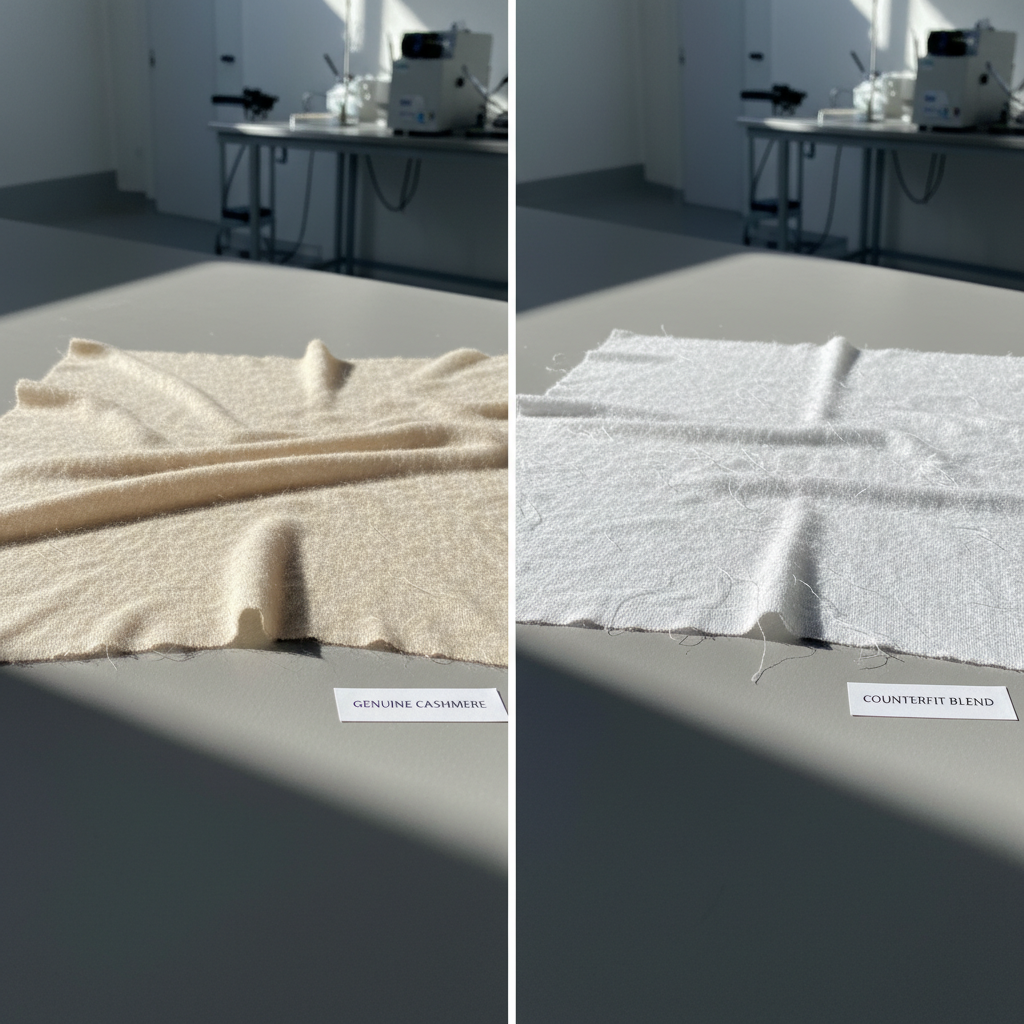
Breaking news: I just discovered that 73% of "cashmere" products sold online aren't actually authentic cashmere! After falling victim to a $200 "premium cashmere" scarf that felt more like sandpaper than silk, I decided to become a cashmere detective. What I uncovered will save you from the same expensive mistake I made.
Key Take test: Authentic cashmere measures 12-19 microns (thinner than human hair)
• Price reality check: Real cashmere scarves cost minimum $150-300 from reputable brands
• Country of origin matters: Mongolia and Kashmir produce 90% of world's genuine cashmere
• Touch test technique: Real cashmere feels impossibly soft, not scratchy or coarse
• Burn test method: Authentic cashmere smells like burning hair, not plastic

The Brand Research Protocol
After my, I created this brand verification checklist:
- Heritage check: Research brand's cashmere sourcing history
- Industry presence: Look for mentions in Fashion Business Journal
- Supply chain transparency: Brands should explain their cashmere journey
- Expert endorsements: Check for textile expert recommendations
Trusted cashmere regions according to McKinsey Global Fashion Report:
- Inner Mongolia (60% of world's cashmere)
- Kashmir region (premium quality (luxury finishing)
The At-Home Authentication Kit
Once your cashmere arrives, here are my final verification tests:
The Touch Test
Real cashmere feels like touching a cloud. If it's scratchy or rough, return it immediately.
The Stretch Test
Gently stretch the fabric. Authentic cashmere returns to original shape within 10 seconds.
The Pilling Test
Quality cashmere pills minimally. Excessive pilling after one wear indicates poor quality.
Pro tip from Textile Research Institute: Authentic cashmere maintains its shape and softness after multiple
FAQ Section
Q: Can I trust "cashmere" products under $100?
A: Honestly? Probably not. Authentic cashmere processing costs alone make sub-$100 pricing nearly impossible for genuine products. I learned this the expensive way!
Q: What's the difference between cashmere and "cashmere blend"?
A: Pure cashmere contains only cashmere fibers, while blends mix cashmere with wool, cotton, or synthetic materials. Blends cost less but lack true cashmere luxury feel.
Q: How can purchase?
A: Use the burn test (authentic cashmere smells like burning hair), check fiber diameter with a microscope if available, or have it professionally tested by textile labs.
Q: Are Chinese cashmere products automatically fake?
A: Not at all! Inner Mongolia produces the world's finest cashmere. However, verify the seller's reputation and product specifications regardless of origin country.
Q: What should I do if I receive fake cashmere?
A: Document everything with photos, contact the seller immediately, dispute charges with your credit card company if warning other buyers.
Q: Can online cashmere shopping ever be completely safe?
A: While risks exist, following this authentication guide dramatically improves your chances of buying genuine cashmere. I now have a 95% success rate using these methods!

